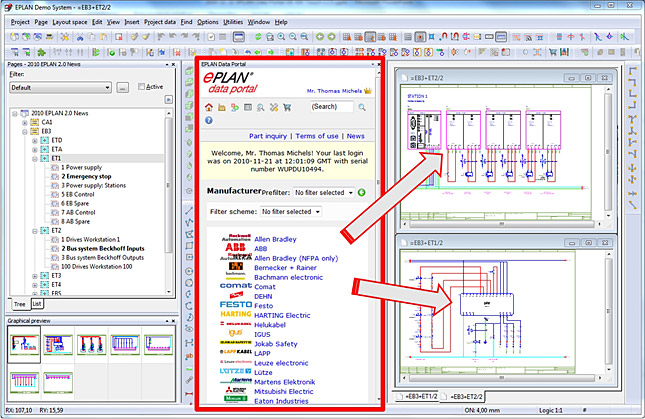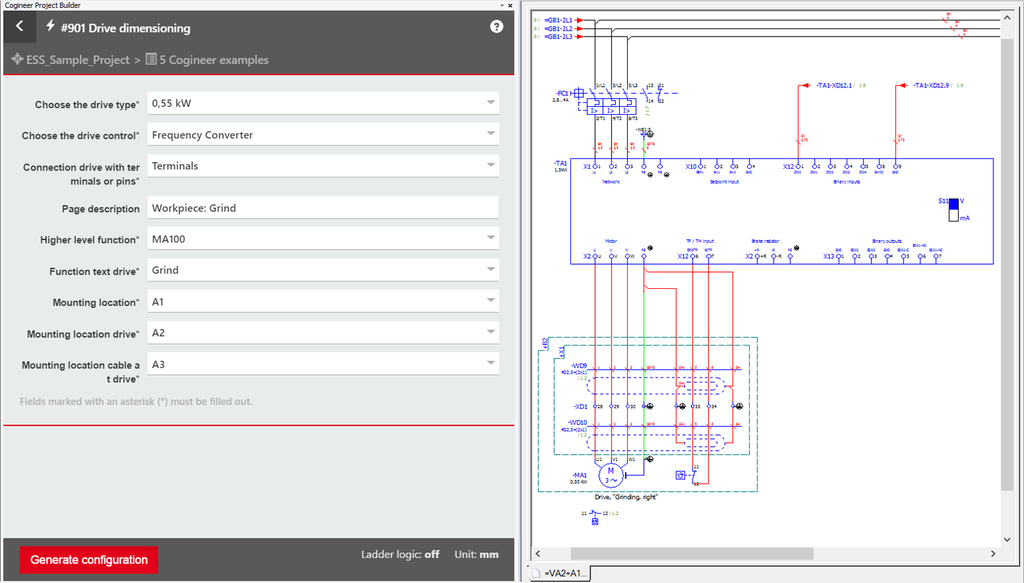
In this context, you can "browse" the functions using the key and select the required one. If you have selected a DT in a navigator and you drag it to a schematic page using drag & drop, all the functions of this device are offered for placement one after the other. Click on another function of the selected block this removes the original selection and selects the new function. The function that was selected last is marked by a broken border line.

Please note that when using multiple selections in a navigator's tree view, the selection made is only retained if you draw the most recently selected function. In the navigators from within which you can place functions (e.g., device navigator), it is also possible to make a multiple selection and to place the selected functions on a page one by one via drag & drop. Inserts (with parts data) / assigns (3D: places). When you have selected the desired position, insert the function with a click. Special feature of drag & drop: When the mouse button is released, the function hangs on the cursor. The created representation type depends on the page type where the function is placed. In the process, it does not matter if the function has already been placed, is unplaced, or is of a different representation type. From an EPLAN navigator into the graphical editorįrom the navigator, you can place every function on a page as many times as you like. To copy pages hold down the key while dragging the page.

Within the tree / list view of the EPLAN page navigator To create a page macro hold down the key while dragging the page.
#Eplan hold scroll to drag windows#
Inserts the text into an EPLAN table or an input field.įrom the tree view of the EPLAN page navigator into the Windows Explorer Inserts the file depending on the file type. Inserts a hyperlink to the external document.įrom the Windows explorer into the page navigator Object can be assigned here (if you drag, e.g., a DT from a navigator into the graphical editor by means of ).ĭrag & drop in EPLAN From the Windows explorer into the page navigatorįrom the Windows Explorer into the graphical editor For instance, you can directly open a file once you have dragged and dropped it. This way, you can see when the action is possible and which action you are currently executing in connection with drag & drop (move pages, place function, insert external file, etc.). When you then release the mouse button, depending on the source and target programs, the data associated with the source object is copied, moved or linked to the target program.Īs for drag & drop in the EPLAN platform, you are shown an additional information text in the status bar as soon as the action is permitted. If you click with the mouse button on the graphical representation of a drag & drop source and then move the mouse while holding down the mouse button, then the cursor will change its shape, and you can then see if you have dragged it onto a target object that is drag & drop capable. Note, this solution assumes you want to scroll something inside the whole visible window.Drag & drop is a method of moving data between computer programs using the mouse. a value of 16 will attempt to run at 60fps. If you are worried about using too much CPU, you can try increasing the ,20) interval to 100+. Then inside your drake.on("drop", function add this to turn the scroll function off.īecause that mouseup event capture doesn't work for me either, but it might for you. YourGlobalObject.dragInterval = setInterval(function(),0) ĬlearInterval(yourGlobalObject.dragInterval)


 0 kommentar(er)
0 kommentar(er)
